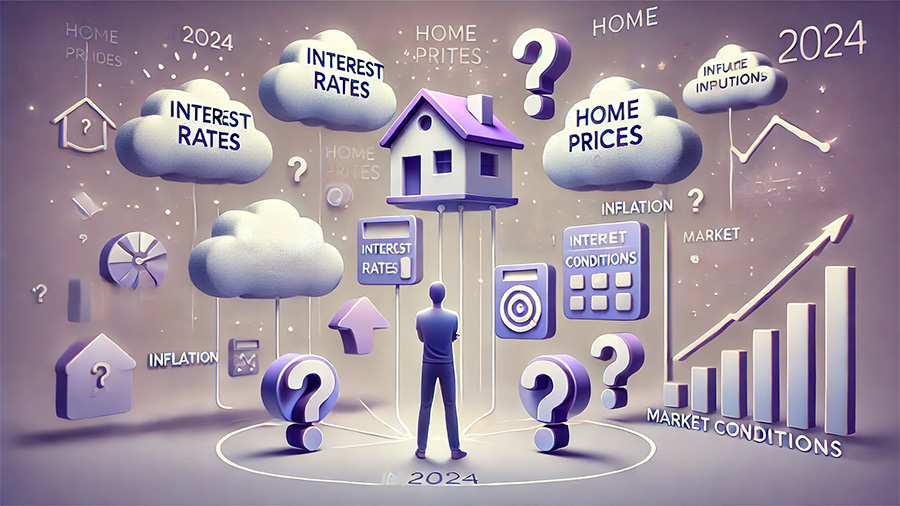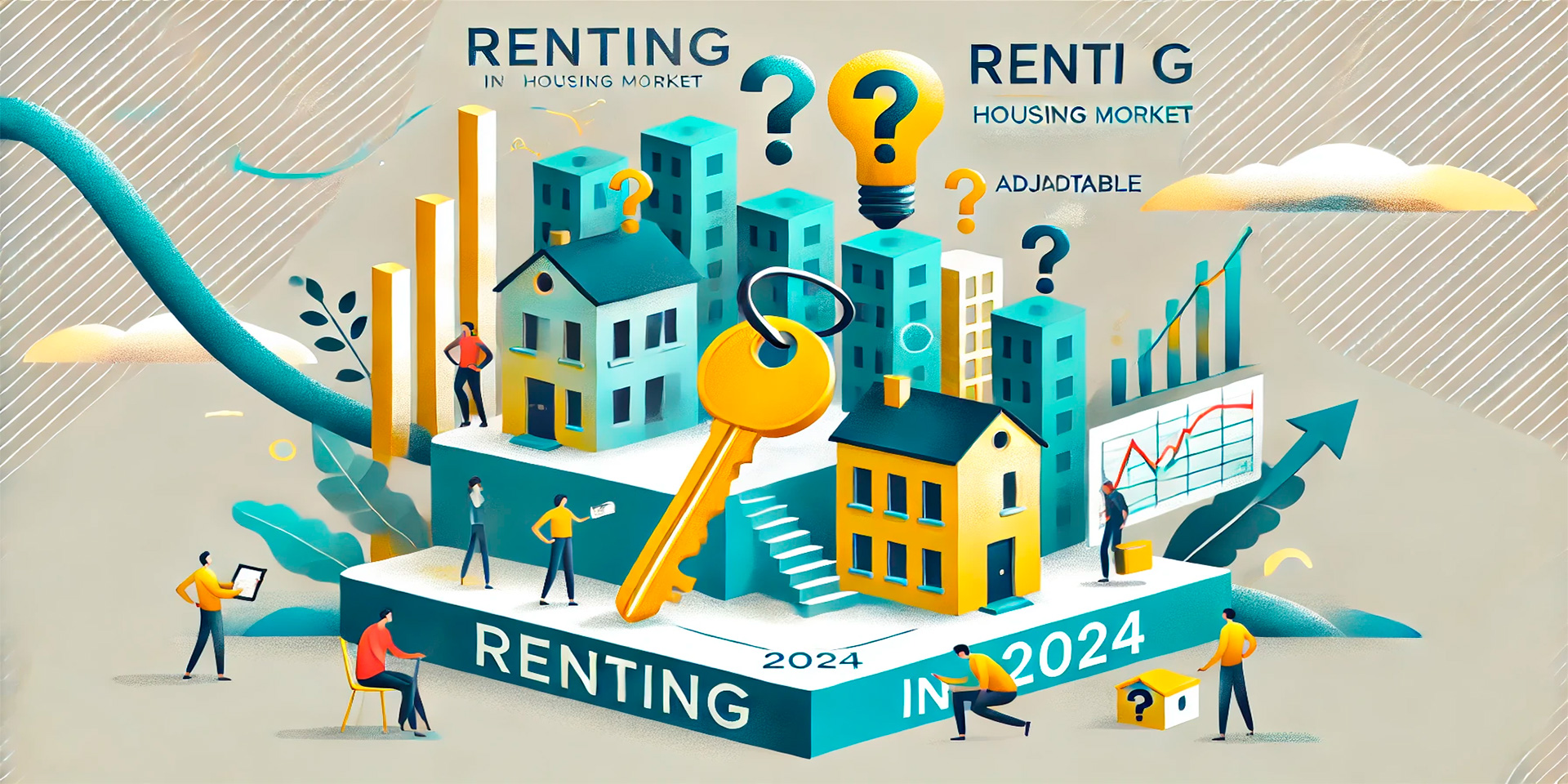With the housing market experiencing fluctuations due to various economic factors, many potential homebuyers are wondering whether now is the right time to make a purchase. Interest rates, home prices, and market dynamics all play a significant role in shaping the housing market, and the decision to buy hinges on a variety of factors. In 2024, understanding whether it’s a buyer’s or seller’s market and analyzing the broader trends can help you make an informed decision. In this article, we’ll explore whether it’s still a good time to buy a home in today’s market.
Understanding Market Dynamics in 2024
The housing market in 2024 is marked by a combination of rising interest rates, high demand in certain regions, and fluctuating housing supply. These factors contribute to a market that can be both challenging and opportunistic for buyers, depending on where and when they choose to purchase.
Several key dynamics are shaping the market this year:
- Interest rate hikes by the Federal Reserve have increased mortgage rates, making borrowing more expensive.
- Housing inventory remains tight in many areas, contributing to elevated home prices.
- Some regions are experiencing cooling demand as potential buyers wait for better financing options or more inventory to come onto the market.
By understanding how these trends are playing out, you can better determine if now is the right time for you to enter the housing market.
How Interest Rates Are Affecting Homebuyers
One of the most significant factors influencing the 2024 housing market is the rise in interest rates. Over the past few years, the Federal Reserve has steadily raised rates to combat inflation, which directly affects mortgage rates. As interest rates increase, so do the costs of borrowing, which can make homeownership more expensive for buyers.
Higher Monthly Payments
The primary impact of higher mortgage rates is an increase in monthly mortgage payments. For example, if you take out a mortgage at 5% instead of 3%, the difference in your monthly payment could be substantial, depending on the size of the loan. Over the life of a 30-year mortgage, even a 1-2% increase in interest rates can add thousands of dollars in additional interest payments.
For many buyers, higher monthly payments mean they may need to adjust their budget or consider purchasing a smaller home or a home in a less competitive market.
Affordability Challenges for First-Time Buyers
Rising mortgage rates also present challenges for first-time homebuyers who are already navigating high home prices and tight inventories. Higher interest rates can reduce buying power, limiting the options available to those on a tighter budget. In many cases, this can push first-time buyers to delay their purchase or seek more affordable housing markets where their money can go further.
However, while rising rates present challenges, there are still opportunities for buyers who plan strategically and secure favorable mortgage terms.

Is It a Buyer’s or Seller’s Market in 2024?
Determining whether it’s a buyer’s market or seller’s market in 2024 depends largely on the region and local housing dynamics. A buyer’s market occurs when housing supply exceeds demand, leading to lower prices and more negotiating power for buyers. A seller’s market is the opposite—high demand and limited supply drive up home prices and favor sellers.
Local Market Conditions Vary
In some areas of the U.S., particularly in high-demand urban centers or regions experiencing economic growth, it remains a seller’s market. Home prices continue to rise due to limited inventory and strong demand. In these markets, buyers face intense competition, bidding wars, and rising prices, which can make it more difficult to find a good deal.
Conversely, other markets, especially those experiencing slower economic growth or increasing housing supply, may be shifting toward a buyer’s market. In these regions, prices have stabilized or even decreased slightly, giving buyers more options and negotiating power.
Signs of Cooling in Certain Markets
In 2024, we’re beginning to see signs of cooling in some of the hottest housing markets. As interest rates rise and affordability becomes a bigger concern, some potential buyers are holding off on making a purchase, which has slowed demand. In these areas, sellers may need to be more flexible on price, offering better deals for motivated buyers.
If you’re considering buying in a market that’s starting to cool, now may be a good time to purchase, especially if prices are stabilizing after a period of rapid growth.
How Home Prices Are Trending in 2024
Another key consideration for buyers in today’s housing market is the direction of home prices. While many markets saw rapid price increases over the past few years, 2024 may bring more stabilization in certain regions, as higher mortgage rates temper demand.
High Prices in Competitive Markets
In competitive markets, particularly those with strong job growth, such as New York, San Francisco, and Austin, home prices remain high. In these regions, buyers may still face bidding wars, especially for homes in desirable neighborhoods. While prices may not be rising as quickly as they did in previous years, they are unlikely to drop significantly in these high-demand areas.
If you’re buying in one of these markets, it’s important to be prepared for competition and to set realistic expectations about pricing.
Price Adjustments in Less Competitive Areas
In contrast, some areas of the country are seeing price adjustments as demand cools and inventory increases. Markets that experienced rapid price growth during the pandemic may be stabilizing as more homes come onto the market and buyers become more price-conscious due to higher mortgage rates. In these areas, buyers may find more opportunities to negotiate and secure a better deal.
If you’re willing to be flexible about location, you may find more affordable options in these less competitive markets.

What Should Buyers Consider in 2024?
If you’re thinking about buying a home in 2024, several factors should be part of your decision-making process. While interest rates and home prices are important considerations, there are other aspects that can help determine if now is the right time for you.
Your Financial Stability and Long-Term Plans
Before entering the housing market, it’s essential to evaluate your financial stability and long-term goals. If you have a stable job, a strong credit score, and enough savings for a down payment and closing costs, you may be well-positioned to buy, even if interest rates are higher. Consider how long you plan to stay in the home and whether the purchase aligns with your financial and personal goals.
Buying a home is a long-term investment, so if you plan to stay in the property for several years, short-term fluctuations in the market may be less of a concern.
Securing the Best Financing Options
To mitigate the impact of rising interest rates, it’s important to shop around for the best mortgage rates and terms. Working with lenders to secure a fixed-rate mortgage can provide stability in your monthly payments, protecting you from future rate increases. You may also want to explore first-time homebuyer programs or down payment assistance options, which can help reduce upfront costs.
Comparing lenders and understanding all available financing options can make a significant difference in the affordability of your home purchase.
Time of Year and Market Timing
The time of year can also affect your buying experience. In many markets, spring and summer are the busiest seasons for home sales, leading to more competition and higher prices. However, buying during the fall or winter may give you more negotiating power, as fewer buyers are actively searching, and sellers may be more motivated to make a deal.
Timing your purchase based on seasonal market trends can help you get a better price and find a home that meets your needs.
Conclusion: Is Now a Good Time to Buy?
In 2024, whether now is the right time to buy a home depends on several factors, including interest rates, local market conditions, and your personal financial situation. While rising mortgage rates present challenges, opportunities still exist for buyers who are well-prepared and willing to adapt to market conditions.
In some markets, prices remain high, but there are signs of cooling in others, creating potential opportunities for buyers to secure better deals. By understanding the broader trends shaping today’s housing market and evaluating your long-term goals, you can make an informed decision about whether now is the right time to buy.
Staying proactive, shopping around for financing, and carefully considering your financial readiness are essential steps in navigating the current housing market. Whether you’re buying your first home or upgrading, the key is to align your purchase with your overall financial strategy.


